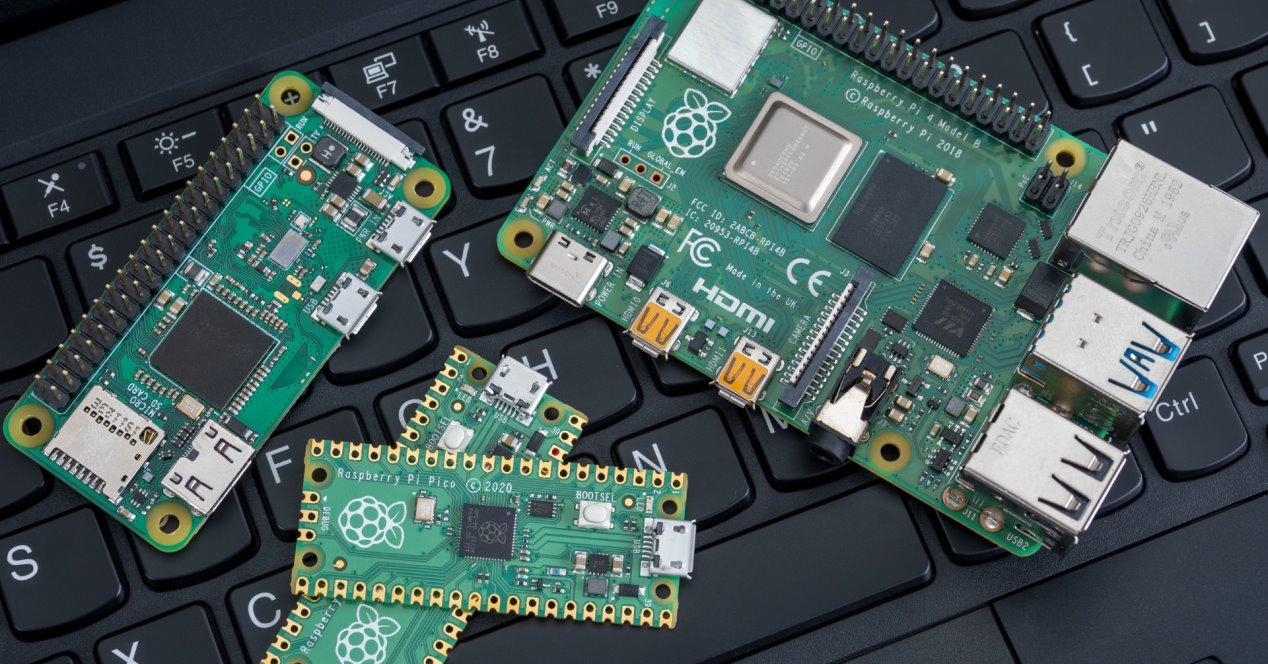In case you don’t know, a Raspberry Pi is a single-board, single-board, or low-power motherboard computer. This type of system is based on a very efficient small processor and good connectivity (in most models). They focus on what is called in English DIY (do it yourself) or do it yourself, colloquially called “cacharreo”.
How much does a Raspberry Pi consume?
These single-board computers are primarily intended for the development of various electronic projects. Some models are also great for use as computers for work, study or sail. Since they focus on light (or relatively light) tasks, the processor does not need to offer excessive power.
The consumption depends on the use that we will give to this type of unique plates. Even with a heavy workload, the consumption is even inferiorin many cases, to a LED bulb.
We are going to make a distinction or a segmentation. On the one hand we will give the data of the models that we could use as a personal computer, such as the Raspberry Pi 4. Then we will give the data of the boards more focused on “DIY” such as the Raspberry Pi Pic, for example. Finally, we will see the Pi 400 keyboard data, an interesting solution that integrates one of these plates into a keyboard.
Optimal models as a personal computer
Consider that a Raspberry Pi can be used like a regular PC, when it has multiple USB and video output ports. According to the data we have collected, they consume:
| Model | Rest | Charge | maximum consumption |
|---|---|---|---|
| ModelRaspberry Pi 2B | Rest1.1W | Charge2.25W | maximum consumption2W |
| ModelRaspberry Pi 3B | Rest1.3W | Charge2.4W | maximum consumption3.65W |
| ModelRaspberry Pi 3 B+ | Rest1.75W | Charge4.75W | maximum consumption4.9W |
| ModelRaspberry Pi 4B | Rest2.7W | Charge5.05W | maximum consumption6.4W |
| ModelRaspberry Pi 400 Keyboard | Rest2.5W | Charge– | maximum consumption4W |
We have to say that we don’t know if the Raspberry Pi 4B is the model you have 2 GB, 4 GB and 8 GB RAM memory. The difference in consumption must not be excessive, of a maximum of 5% compared to the given data. Keep in mind that this is the first of the plates that add WiFi, so consumption is higher than in other models. Also indicate that this data was obtained from PiDramble.
According to Raspberry Pi 400 Keyboard
Project solutions
Initially, the Raspberry Pi was created as a more powerful alternative to Arduino boards. They offer greater computing capacity and more possibilities, by having, among other things, a network card. They currently offer a wide variety of solutions, including these more electronic project-oriented models. The consumption of these models is:
| Model | Rest | Consumption |
|---|---|---|
| Modelpeak | Rest0.0065W | Consumption0.47W |
| ModelPico W | Rest0.0065W | Consumption0.47W |
| ModelZero W | Rest1.3W | Consumption1.85W |
| ModelZero 2W | Rest1.4W | Consumption2.9W |
The bone Pi Pico Models they eliminate connectivity and use a very simple, low-power processor. Hence the consumption be so extremely low. The consumption data was obtained from the data sheet that the Raspberry Pi itself published on its website.
While the Pi Zero Models, the information we obtained from a review of Tom’s Hardware colleagues. They are also efficient cards as they use tight CPUs and significantly reduce connectivity.
Why do I want to know the consumption?
There are several reasons why it is interesting to know the consumption of these reduced plates. The first is that you can find out how much you could save on electricity compared to a laptop or desktop computer. Currently, the price of electricity is exploding and the savings can be considerable.
While the models are more designed for DIY projects, it is important to know the consumption. There are many projects that are meant to be used outdoors or stand alone. Obviously, we will need to power the chosen Raspberry Pi with a battery. Knowing the consumption and capacity of the battery allows us to know what autonomy our project can have.
Table of Contents











